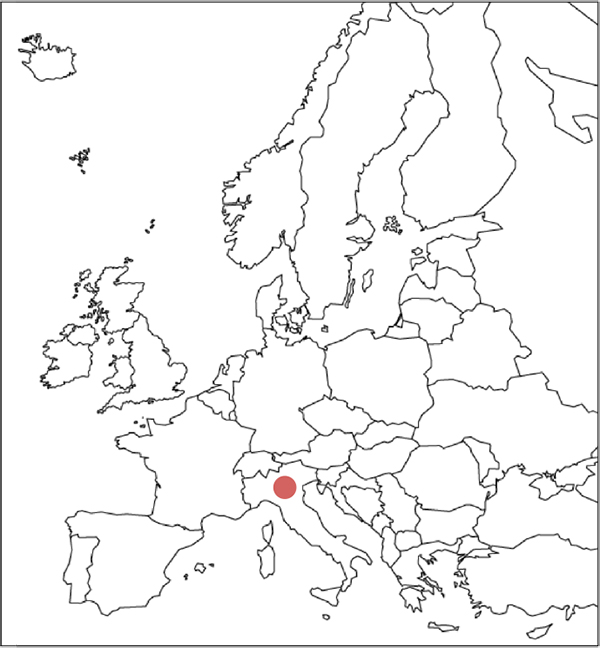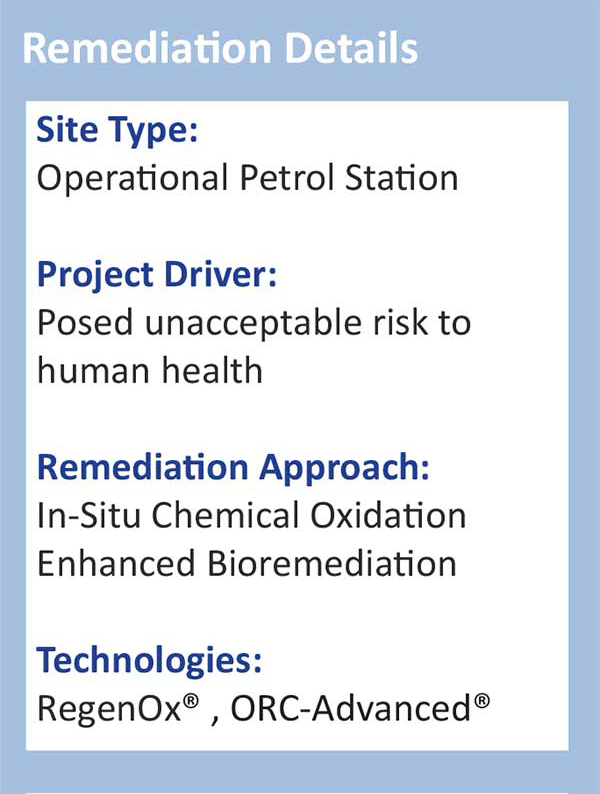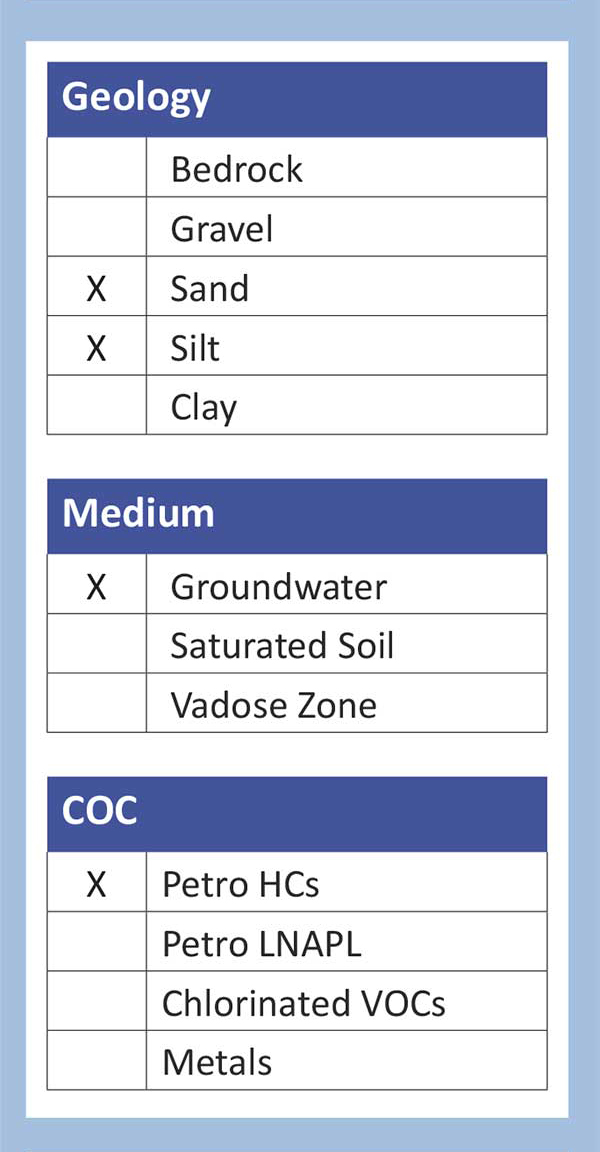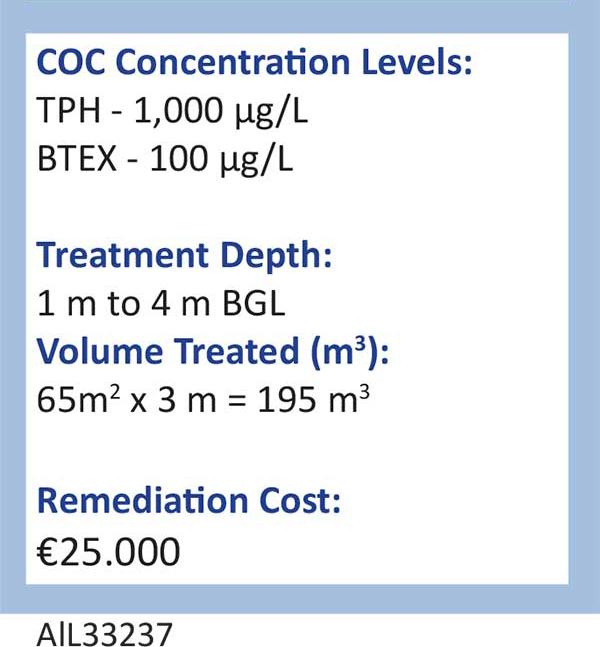In situ chemical oxidation and bioremediation treat TPH and BTEX
Summary
 Leakages from underground storage tanks (UST) at an operational petrol filling station located in a densely populated urban area in Northern Italy, resulted in significant TPH and BTEX contamination (with concentrations up to 1,000 μg/L and 100 μg/L respectively), impacting the soil and groundwater.
Leakages from underground storage tanks (UST) at an operational petrol filling station located in a densely populated urban area in Northern Italy, resulted in significant TPH and BTEX contamination (with concentrations up to 1,000 μg/L and 100 μg/L respectively), impacting the soil and groundwater.
Contamination was migrating off-site and presenting an unacceptable risk to off-site receptors, resulting in a remediation requirement to reduce contaminant levels to below 350 μg/L TPH and 1 μg/L BTEX.




Treatment
The application design for the 65m2 target area comprises of
8 injection points arranged in a 3 x 3 m grid spacing, which is being carried out over 2 phases. The first phase consists of the injection of RegenOx (oxidiser); the second of a further dose of RegenOx, followed by ORC-Advanced.
Regulatory acceptance despite low permeability aquifer
- Upon injection into the subsurface, the In Situ Chemical Oxidation (ISCO) reagents are required to come into physical contact with the contaminant in order to cause the desired chemical reaction, and for this reason are typically applied to higher fluid volumes. Application can be challenging in low permeability formations.
- Despite the extremely low permeability within the sites’ sandy silt aquifer, our in situ remedial approach proved the most appropriate remedial option, successfully gaining regulatory acceptance.
- Monitoring data show reductions in contaminant concentrations after treatment.


 Americas
Americas Europe
Europe Français
Français Deutsch
Deutsch Italiano
Italiano Español
Español
